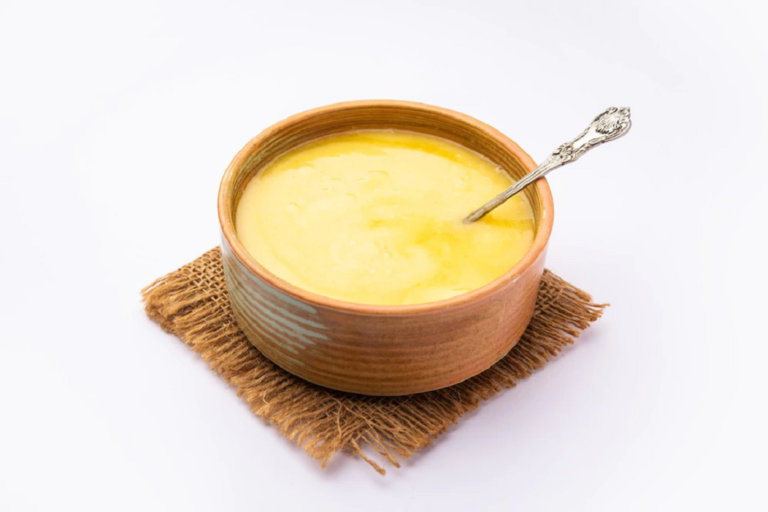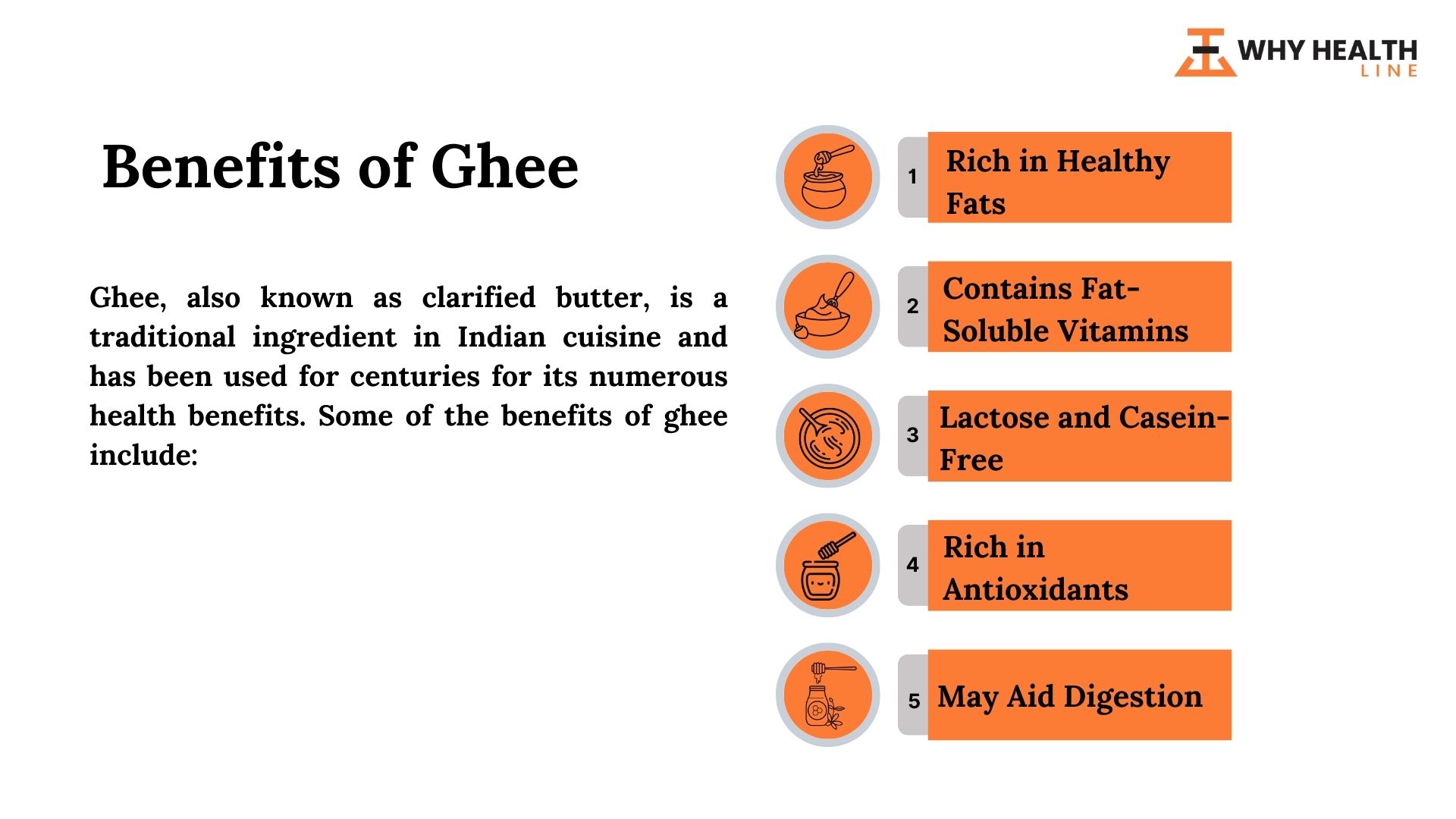
Introduction
Ghee is a type of clarified butter that originated in ancient India and is commonly used in Indian cuisine. It is made by simmering unsalted butter over low heat until the water content evaporates and the milk solids separate from the pure butterfat.
The milk solids are then strained out, leaving behind a clear, golden-colored liquid with a rich, nutty flavor and aroma.
It has a high smoke point, which means it can be heated to high temperatures without burning, making it an excellent cooking oil for frying and sautéing.
It also has a longer shelf life than butter and can be stored at room temperature for several months.
How Is It Made?
It is made by simmering butter until the milk solids separate from the fat, which is then strained off, resulting in a clear, golden liquid that is rich in flavor and has a high smoke point.
Here are the steps to make ghee:
Start by melting unsalted butter in a heavy-bottomed saucepan over low heat. You will need about 1 pound of butter to make 1 cup of ghee.
As the butter melts, it will start to foam. Use a spoon to skim off the foam and discard it.
Continue to simmer the butter over low heat, stirring occasionally, until the milk solids at the bottom of the pan, turn golden brown and the liquid on top turns clear and golden.
This can take anywhere from 15 to 30 minutes, depending on the amount of butter you are using and the heat of your stove.
Once the liquid turns clear and golden, turn off the heat and let the mixture cool for a few minutes.
Next, strain the ghee through a fine-mesh strainer or cheesecloth into a clean, dry jar. This will remove any remaining milk solids and impurities.
Let the ghee cool to room temperature before using or storing it. It will solidify at room temperature but will melt easily when heated.
Is Ghee Healthier Than Butter?
Ghee and butter are both derived from milk fat, but they differ in their production process and nutritional content.
It is made by heating butter to remove the water and milk solids, leaving behind a concentrated form of butterfat. This process gives ghee a nutty flavor and a higher smoke point, making it a preferred cooking fat in Indian cuisine.
Butter, on the other hand, is made of churning cream, and it contains some water and milk solids.
In terms of nutritional content, ghee, and butter are similar, as they both contain saturated fat and cholesterol. However, It is believed to have some potential health benefits that butter does not.
One of the potential benefits of ghee is that it contains butyric acid, a type of short-chain fatty acid that has been linked to improved gut health and reduced inflammation.
It also contains antioxidants and fat-soluble vitamins A, D, E, and K, which may support the immune system and improve overall health.
However, it’s important to note that ghee is still a high-calorie food, so it should be consumed in moderation as part of a balanced diet. Additionally, individuals with dairy allergies.

Some Health Benefits of Ghee
Here are some of the potential benefits of consuming ghee:
Rich in Healthy Fats:
It is high in saturated fats, which are necessary for the body to function properly. It also contains monounsaturated and polyunsaturated fats, which are beneficial for heart health.
Contains Fat-Soluble Vitamins:
It is a good source of fat-soluble vitamins such as vitamins A, D, E, and K, which are essential for maintaining healthy skin, eyesight, and bone density.
Lactose and Casein-Free:
It is made by removing the milk solids from butter, making it a safe alternative for people who are lactose intolerant or allergic to casein.
Rich in Antioxidants:
It is a rich source of antioxidants, which help to protect the body from damage caused by free radicals.
May Aid Digestion:
It contains butyrate, a type of fatty acid that can help to improve gut health and aid digestion.
FAQs
How Much Ghee you Should Eat a Day?
It is rich in fat-soluble vitamins and has a high smoke point, making it suitable for cooking at high temperatures.
However, as with any high-fat food, it’s important to consume ghee in moderation to avoid consuming excessive amounts of calories and unhealthy saturated fats.
The amount of ghee you should consume per day depends on your individual needs and dietary goals.
Is Ghee a Healthy Fat?
Like butter, ghee is primarily composed of fat and is considered a high-fat food. However, there are some potential health benefits associated with ghee consumption.
One benefit of ghee is that it is a rich source of conjugated linoleic acid (CLA), which has been shown in some studies to have anti-inflammatory properties and may also have benefits for heart health.
It is also high in butyric acid, which has been linked to improved gut health and may have anti-inflammatory effects.